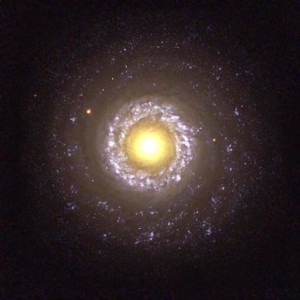ON SUBATOMIC ELECTROMAGNETIC WAVE FORMS
THE LEPTONS, PHOTONS, QUARKS,
AND THE TERNARY FORCE INTERACTION CONSTANT
Reports Of The Mathematical Physics Research Work
Of
Jim Fisher
04 July 1991 to 19 September 2013
And Again Between
August 2016 and June 2019
List Of Hubble Images Used In Book
All visitors may download / copy the complete Preliminary Pages at the Btm Of Page
Total 12 — 8 1/2 x 11 PDF pages, 9.58 MB with astronomical images
Copyright / Intellectual Property Notice
This book and the presentation of mathematical physics work herein are the copyrighted property of the author Jim Fisher.
Except for the intuitive pictorial contributions of Jolanta Pyra as discussed in Chapter 4.3, Personal Overview Of Project, Section 5, the concepts and ideas presented in this book were solely those of Jim Fisher. The mathematical research efforts which lead to this book were solely those of Jim Fisher. Except as noted in the Technical Summary And Overview, Section 3 the multitude of times of writing and rewriting the chapters/reports presented in this book, the publishing efforts, etc were the sole work of Jim Fisher.
While this book is being offered for downloading from the web at no charge, this is for the sole purposes of allowing interested persons to read, analyze, and discuss the material contained herein. All other uses or reproductions of this book or its contained material must be authorized in writing by Jim Fisher.
Preliminary inferior versions of the reports in Part 1, Chapters 1.1 & 1.2 have registered US copyright number TXu 1-135-635, 26-Jan-04. Registration of copyright for this entire book is pending.
Acknowledgments
I wish to thank Jolanta Pyra for her insightful and incredibly accurate inputs, without which this project would not have been completed. Harold Wright deserves a round of applause for helping turn this work into something understandable for the scientific reader.
I wish to thank Professor Jeanne Nielsen Clelland of the University of Colorado Boulder for working up the formulas for the curvatures k1, k2, k3 for curves in 4 spatial dimensions in a mere one week of time, and for free never-the-less.
There are many others whom I wish to recognize and thank. There were supportive coworkers along the way, trail runners from the ultrarunning community, members of the academic physics community, and even several formal journal editors. All of these many people gave encouragement, support, and constructive suggestions to me and for this “crazy” mathematical-physics project. Acknowledgments and recognition of persons who encouraged a researcher-author-publisher are usually made personally by name. Here though, there is still some significant chance that there could be negative professional repercussions for some of the persons who gave positive support to this project and its publication efforts. Thus their names are being withheld until this work receives greater recognition from the scientific community.
 Dedication
Dedication
This book and the many years of work that it represents are dedicated to all those persons who work for women’s freedom; women’s blessings, equality, freedom, liberties, rights, and upliftment. May these persons have many blessings and may the fruit of their work be far greater than any that this work may bring.
Purposes Of Website
This book and the offering of it for free downloading from the World Wide Web have three purposes.
First, one of the main purposes of this book is to bring to the scientific, engineering, and technical persons of the world the results of 20 1/2 years of mathematical physics research by Jim Fisher. Specifically this is to present the equations discovered which describe the charge of the leptons (e), the masses of the three leptons (m_electron, m_muon, m_tau), the (ML)(L/T) for the photons (the Planck constant h), and the Ternary Force Interaction constant. This work is accurate, conceptually simple, and only requires low level math-geometry and three spatial dimensions. Adding to this now the ± 2/3 and ± 1/3 charge of the quarks have been matched with the fixed curvature of certain vector curves in 4 dimensional space.
Secondly and of equal importance is to show all those persons who would contemplate great projects that an unknown, an un-famous person can succeed… where thousands, tens-of-thousands of others with esteemed credentials and conspicuous high pay have failed… because of self imposed limitations that they placed in their own minds… about how their activity, their life’s work was supposed to be done. This scientific exploratory endeavor succeeded because it ignored-violated many of the major mandates, at least 16, that for 30 years academic physicists have made into the only “approved” way of doing conceptual physics. An open mind and creativity were required in this work, not mandated protocols.
Third, is to awaken in the minds of others awe and wonder at the natural world… the universe… life.
To lie on the grass on summer nights and look up at the stars… the full moon… with awe… and wonder. Thus this project was begun many years ago.
To listen to the crickets, the calls of whippoorwills echoing across the water, the purr of the cat…
To watch fireflies, the moonlight shining across a gently lapping lake, a happy waterfall…
To feel the cool breeze on a mountain, the warm sand on a beach, the gentle telepathic touch of another…
These may be the beginnings of other major discoveries… creative works… the upliftment of others.

About This Book
This book is about the leptons, the photons, and a whole lot more…beginning with the donut hole in the center of the electron. This book contains the results of independent… and original… research work in mathematical physics… done by someone outside the academic realm. The viewer is being invited to read first hand the results of the first novel research in basic foundational science in a long time.
The work which resulted in this book was a private and un-sponsored endeavor. This work had a broad multi-year scope and covered multiple investigations in the realm of the subatomic particles. The research went into great depth in each study and produced accurate results each time. Precise models have been discovered which describe 5 of the basic physical properties for the elementary electromagnetic wave forms, the leptons (the electron, the muon, and the tau) and the photons.
Had this work been done in academia, multiple PhD’s would have awarded in both applied math and conceptual particle physics. Since this work was not done as a graduate servant for a thesis dictator, though, no such recognition was received nor any credentials or titles bestowed. Thus history will have to consider this potential major advancement in basic science was just the result of someone’s private time consuming obsession.
While the models discovered may be slightly mathematically messy, they are conceptually quite simple. Even 6th grade science students can understand the explanations offered… for the structures of some of the basic particles which make up our collective universe.
Aside from the technical material, there is some interesting, juicy, reading in this book. Some of the assumptions of physics in general and many of the mandates of conceptual particle physics are held up for what they were found to be, houses of cards. This is not because the author set out to bash physics. He is a career scientist-engineer himself, who knows well and respects the 3 Laws Of Thermodynamics. In fact the author was doing science as he thought it is supposed to be done. Begin with the data and work towards models which explain it. Much to his surprise he found that conceptual particle physicists insist upon starting with the expounding of hypotheses and then proceed with force fitting these human narratives down upon the data.
The credentials and titles of the author, institutions of graduation, places of employment, articles-papers-reports written, number of times cited, etc. are intentionally being suppressed as not being relevant. This way there will not be any of the usual intellectual profiling of the author. A well defined foundational research work in physical science should be judged upon its own merits, not by the perceived merits of the investigator or perceived lack of merits.
Was the research program well organized, well thought out? Was the work carried out according to a plan? Was the plan flexible? Was the research based upon the data and only the data, or does it invoke other spurious, imaginary, unverified, or unverifiable “data”? Do the results accurately reflect the facts of physical reality, can they be verified, reproduced? Do the results explain the data, all the data, only the data, to a reasonable degree of accuracy? Are the conclusions merited? Do they deserve discussion?
Note, nowhere does the author claim that the models offered are The Way and The Truth…the Only or the Correct explanations which may fit the measured physical property facts. The only claim made is that the accuracy of the models, their interlocked patterns, and analogies to real world physical features at least merit a public hearing. Academia did everything in its power to squash this work and prevent it from seeing the light of day. It appears that some persons in academia were so fearful of what they thought was going to be revealed that they refused to let this material have a hearing, let alone a fair hearing. Thus you the general public, mathematicians, engineers, and other technical persons will be the judges of the merit of this work.
Thank You So Kindly…for reading the work of an unknown, an un-famous person.
Jim Fisher
 About The Author
About The Author
Jim Fisher has been an ultrarunner… a long distance, high altitude, mountain, trail runner for 22 years. He has completed 5 Hardrock 100’s and 5 Leadville Trail 100’s. Additionally he completed the Pikes Peak Quad, a 100 miler, and a 24 hour track run with over 100 miles… just as training runs. Jim hasn’t kept track of how many 50 milers that he has run.
Endurance athletes in Boulder Colorado USA have an excellent opportunity to develop their minds as well as their bodies. When a person runs for 34 months and 10 days without missing a single day dedication and discipline are bound to arise. These carry over to other aspects of life… such as maybe to a private personal project which has taken on a life of its own, leading on… and on… and on.
While running on the trails 2 hours a day 6 days a week, at high speed, a person develops the ability to think quickly. Rocks and roots are always coming at the feet. Over the years the need to think fades. Sensory impressions go in the eyes and out the legs. The brain is not required. The body completely trusts the legs to know what they are doing. The mind is free to focus on other matters… such as the beautiful scenery… or maybe mathematical equations.
While running in the mountains 8, 10, 12 hours one day every weekend, a person has a wonderful opportunity to think… freely… clearly… intuit new ideas. The peace and quiet and beauty become a pure land through which one floats on their legs.
While out running on the trails Jim indulged in his other favorite pastime, mathematical physics. He would come up with ideas and test them out on his computer later at night. Slowly over the years precise models for most of the physical properties for the leptons and photons were discovered. That is, discovered not developed. Found by trial and error. No preconceived molds or models were imposed upon the particles. The particles presented themselves. The human observed.
Eventually old and broken down ultrarunners end up in yoga studios. There the same fading of intellectual thinking into just doing and being occurs. Except, in yoga sanctuaries this is even easier… because within them there is an uplifting group energy. Over the years when the running and mathematics have receded, then the important matters in life start to reveal themselves.
Instructions & Suggestions For Readers
The Table Of Contents gives a self evident description of what is in this book.
1 For those persons who are in a hurry and who have no time for their own life, Part 1 Technical Summary And Overview, page 1, is the Executive Summary of this work in 534 words.
2 A suggestion for all would be readers of this work is to first read the entire Part 1 Technical Summary And Overview to determine if you want to indulge in and entertain yourself any further with this book.
3 For those persons who would be inclined to demean themselves and to abase themselves at the feet of the particle physicists, Please Do Not Do This. You do NOT have to be an academic hypothetical physicist, a high energy collider experimentalist, a particle physicist of any sort, or even have any degree in physics for that matter to understand this work. Even the average American without any college degree can read and follow most of the presentations in this book, if they want to. There is the warning that some of the core technical chapters, specifically Part 1, Chapter 1.1 and Chapter 1.2, are quite dense. That is inherent in the nature of the mathematics and nothing can be done about it. But this does NOT have to do with you somehow being lessor than mathematicians or physicists.
4 For those persons who are even vaguely familiar with second semester calculus and what a ∫ symbol is and what it stands for, then you can read this work with ease. For the core mathematical-technical chapters in Part 1, Chapter 1.1 and Chapter 1.2, a suggestion is that these chapters be read in two passes. On a first pass just read on-thru the equations and simply follow the discussions. Then if you are so inclined make a second reading and pick at the equations to your heart’s content.
5 For those mathematicians, astronomers, engineers, scientists, and other technical persons who are interested in reading this work and who are unsure what a lepton is, you are directed to Appendix 1 the Particle Physics Primer. Note a lepton is not a little being with a pointy red hat and green boots with turned up toes.
6 For the academic physicists there are several suggestions and recommendations for homework.
6.1 For those who would consider delivering the incredibly insulting remark, “You just plopped the equations out on the page”. This is while referring to Chapter 1.1 Equations 09-12 and Equation 14 onwards and to Chapter 1.2 Equation 08 onwards. Fourteen years of mathematical research at 2-6 hours per night does not constitute “just plopped”. Please go to the Introductory pages for Part 1 of the PDF and read the Notice To Academic PhD’s. It is suggested that you go back to Chapters 1.1 and 1.2 again and re-read the Sections 1.2 Objective & Scope, slowly this time. Also you are directed to Chapter 4.1 Methodology, Section 2 thru the end Section 10 and Chapter 4.3, Section 9.
6.2 For those who would instantly consider expressing the incredibly childish and just plain dumb, “What if the length of the meter was different”. You are directed to Part 3 Chapters 3.4 to 3.6. Please read Chapter 3.6 first, before even starting the three core results chapters in Part 1.
6.3 For those who would demand that the equations for the masses and charge of the leptons be made sterile and measurementless. This is again while referring to Chapter 1.1 Equation 09 & 14. You are directed to Chapter 3.1, Section 2, Preliminaries, and Section 3, Ratios, as well as to Chapter 3.2 Section 4. Please read and thoroughly understand Chapter 3.4 Section 5 first before proceeding any further.

Astronomical Photographic Images throughout this book are as follows:
Front Cover – Home Page:
Barred Spiral Galaxy NGC 1300, Image hs-2005-01-a
With 90° counter clockwise rotation added
Credit: NASA, ESA, The Hubble Heritage Team (STScl/AURA)
Preliminary Pages, Dedication:
Black Hole-Powered Spiral Galaxy NGC 7742, Image hs-1998-28-a
Credit: NASA, The Hubble Heritage Team (STScl/AURA)
Preliminary Pages, Purposes:
Barred Spiral Galaxy NGC 1672, Image hs-2007-15-a
Credit: NASA, ESA, The Hubble Heritage Team (STScl/AURA), ESA/Hubble Collaboration
Technical Summary and for also Technical Summary and Overview
Jet In Carina WFC3 UVIS/IR, Image hs-2009-25-k
Credit: NASA, ESA, The Hubble SM4 ERO Team
Part 1 Cover:
Ring of Hot Blue Stars Pinwheels Around Yellow Nucleus of Hoag’s Object Galaxy,
Image hs-2002-21-a
Credit: NASA, The Hubble Heritage Team (STScl/AURA)
Chapter 1.1 A Model For Determining Physical Properties I: Properties Of Leptons:
Spiral Galaxy NGC 4622 Spins “Backwards”, Image hs-2002-03-a
With left-to-right mirroring added or 180° horizontal rotation
Credit: NASA, The Hubble Heritage Team (STScl/AURA)
Chapter 1.2 A Model For Determining Physical Properties I: Properties Of Photons:
Horsehead of a Different Color, Image hs-2013-12-a
Credit: NASA, ESA, The Hubble Heritage Team (STScl/AURA)
Chapter 1.3 A Model For Determining Physical Properties I: Charge Of The Quarks:
Sheets of Debris From a Stellar Explosion (N49, DEM L 190), Image hs-2003-20-a
Credit: NASA, ESA, The Hubble Heritage Team (STScl/AURA)
Chapter 1.4 A Model For Determining Physical Properties I: Ternary Force Interaction Constant:
Infant Stars In Nearby Galaxy, Image hs-2007-04-a
Credit: NASA, ESA, The Hubble Heritage Team (STScl/AURA), ESA/Hubble Collaboration
Part 2 Cover:
A “Rose” Made of Galaxies, Image hs-2011-11-a
Credit: NASA, ESA, The Hubble Heritage Team (STScl/AURA)
Chapter 2.1 Implications And Consequences Of The Lepton And Photon Equations:
Hubble/Subaru Composite Image of Star Forming Region S106, Image hs-2011-38-b
Credit: NASA, ESA, The Hubble Heritage Team (STScl/AURA), Subaru Telescope (National Astronomical Observatory of Japan)
Chapter 2.2 Towards A Periodic Table Of The Elements Of Physics (PTEP):
The Cat’s Eye Nebula NGC 6543, Image hs-2004-27-a
Credit: NASA, ESA, HEIC, The Hubble Heritage Team (STScl/AURA)
Chapter 2.3 An Approach Towards A Mathematical Description Of The Quarks:
The Ant Nebula, Menzel 3, Image hs-2001-05-a
Credit: NASA, ESA, The Hubble Heritage Team (STScl/AURA)
Chapter 2.5 Future Work:
Pleiades Star Cluster, NGC 1432/35, M45, Image hs-2004-20-a
Credit: NASA, ESA, AURA/Caltech
Part 3 Cover:
Same Image as Preliminary Pages, Purposes
Chapter 3.1 Measurement Units & Scales General Introduction:
Spiral Galaxy NGC 3982, Image hs-2010-36-a
Credit: NASA, ESA, The Hubble Heritage Team (STScl/AURA)
Chapter 3.2 Absolute Measurement Systems – Example Of Usage:
Barred Spiral Galaxy NGC 6217, Image hs-2009-25-bc
Credit: NASA, ESA, Hubble SM4 ERO Team
Chapter 3.3 Measurement Systems Bases:
Galaxy NGC 6782, Image hs-2001-37-a
Credit: NASA, The Hubble Heritage Team (STScl/AURA)
Chapter 3.4 Analyses Of Measurement Systems I:
Whirlpool Galaxy M51, Image hs-2001-10-a
Credit: NASA, The Hubble Heritage Team (STScl/AURA)
Chapter 3.5 Analyses Of Measurement Systems II:
Spiral Galaxy M74 NGC 628, Image hs-2007-41-a
Credit: NASA, ESA, The Hubble Heritage Team (STScl/AURA), ESA/Hubble Collaboration
Chapter 3.6 Analyses Of Measurement Systems III:
Sombrero Galaxy M104, Image hs-2003-28-a
Credit: NASA, The Hubble Heritage Team (STScl/AURA)
Part 4 Cover:
Globular Cluster M80, NGC 6093, Image hs-1999-26-a
Credit: NASA, The Hubble Heritage Team (STScl/AURA)
Chapter 4.1 Research Work Objectives, Methodology, Guidelines, & Criteria For Results:
Supernova Remnant Cassiopeia A, Image hs-2006-30-b
Credit: NASA, ESA, The Hubble Heritage Team (STScl/AURA), ESA/Hubble Collaboration
Chapter 4.2 How Not To Approach This Work
A Multi-Wavelength View of Radio Galaxy Hercules A, Image hs-2012-47-a
Credit: NASA, ESA, The Hubble Heritage Team (STScI/AURA)
Chapter 4.3 Personal Overview Of Project:
The Necklace Nebula PN G054.2-03.4, Image hs-2011-24-b
Credit: NASA, ESA, The Hubble Heritage Team (STScl/AURA)
Appendices Cover:
Same Image as Part 2 Cover
As seen, with left-to-right mirroring, with top-to-bottom mirroring
Back Cover:
Same Image as Front Cover
With 90° counter clockwise rotation added, then left-to-right mirroring or 180° horizontal rotation
Please note the below content listings do NOT transfer the reader to the indicated location in the book. The PDF files must be downloaded. The listings are just to indicate the depth of material contained in this book.
The Results Of The Mathematical Physics Research Concerning The Elementary
Electromagnetic Waveforms The Leptons, Photons, Quarks,
And The Ternary Force Interaction Constant
| Table Of Contents | Page |
| Cover & Preliminary Pages (Including instructions for the readers) | |
|
Total Pages |
12 |
| PART 1 RESEARCH RESULTS The Results Of The Mathematical Physics Research Concerning The Elementary Electromagnetic Waveforms The Leptons, Photons, Quarks, And The Ternary Force Interaction Constant r |
1-1 |
| Executive Summary | 1-3 |
| Technical Summary And Overview | 1-3 |
| Introduction / Scope | 1-15 |
| Chapter 1.1 A Model For Determining Physical Properties I: Properties Of Leptons |
1-21 |
| Chapter 1.2 A Model For Determining Physical Properties II: Properties Of Photons |
1-60 |
| Chapter 1.3 A Model For Determining Physical Properties III: Charge Of The Quarks |
1-90 |
| Chapter 1.4 A Model For Determining Physical Properties IV: Ternary Force Interaction Constant |
1-110 |
|
Total Pages |
129 |
| PART 2 IMPLICATIONS & SPECULATIONS Implications & Consequences Of The Equations Discovered & Suggestions For Building A Periodic Table Of The Elements Of Physics & Discussions Of Possible Future Work r |
2-1 |
| Chapter 2.1 Implications And Consequences Of The Lepton, Photon, And Quark Equations |
2-5 |
| Chapter 2.2 Towards A Periodic Table Of The Elements Of Physics (PTEP) | 2-19 |
| Chapter 2.3 An Approach Towards A Mathematical Description For The Masses Of The Quarks |
2-37 |
| Chapter 2.4 Future Work | 2-51 |
|
Total Pages |
55 |
| PART 3 ANALYSES OF MEASUREMENT UNITS Bases & Analyses Of Measurement Unit Systems |
3-1 |
| Chapter 3.1 Measurement Units & Scales General Introduction | 3-7 |
| Chapter 3.2 Absolute Measurement Systems – Example Of Usage | 3-29 |
| Chapter 3.3 Measurement Systems Bases | 3-39 |
| Chapter 3.4 Analyses Of Measurement Systems I | 3-67 |
| Chapter 3.5 Analyses Of Measurement Systems II | 3-91 |
| Chapter 3.6 Analyses Of Measurement Systems III | 3-103 |
|
Total Pages |
114 |
| PART 4 THOUGHTS ON THE PROJECT Methodology For This Mathematical Physics Research Work, How Not To, Personal Overview |
4-1 |
| Chapter 4.1 Research Work Objectives, Methodology, Guidelines, & Criteria For Results |
1-5 |
| Chapter 4.2 Decisions On How Not To Approach This Work | 1-25 |
| Chapter 4.3 Personal Overview Of Project | 1-41 |
|
Total Pages |
59 |
| APPENDICES | A-1 |
| Appendix 1 Particle Physics Primer | A-3 |
| Appendix 2 The Nature Of Time And Space | A-17 |
| Appendix 3 Expansion Coordinates | A-33 |
| Appendix 4 Cylindrical Figures | A-39 |
| Appendix 5 Separation Of Variables | A-49 |
| Appendix 6 General Mathematical Properties Of Negative Exponential Forms | A-55 |
| Appendix 7 4D Differential Geometries | A-63 |
|
Total Pages |
63 |

